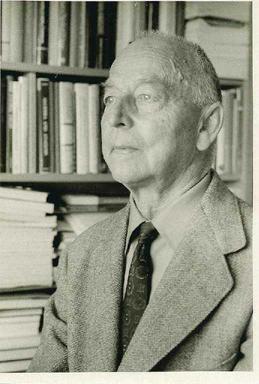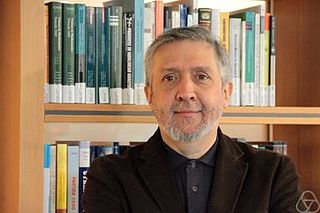Arthur Herbert Copeland was an American mathematician. He graduated from Harvard University in 1926 and taught at Rice University and the University of Michigan. His main interest was in the foundations of probability.

Nathan Jacobson was an American mathematician.

Irving Kaplansky was a mathematician, college professor, author, and amateur musician.

Phillip Augustus Griffiths IV is an American mathematician, known for his work in the field of geometry, and in particular for the complex manifold approach to algebraic geometry. He is a major developer in particular of the theory of variation of Hodge structure in Hodge theory and moduli theory, which forms part of transcendental algebraic geometry and which also touches upon major and distant areas of differential geometry. He also worked on partial differential equations, coauthored with Shiing-Shen Chern, Robert Bryant and Robert Gardner on Exterior Differential Systems.
In mathematics, real algebraic geometry is the sub-branch of algebraic geometry studying real algebraic sets, i.e. real-number solutions to algebraic equations with real-number coefficients, and mappings between them.
Lipman Bers was a Latvian-American mathematician, born in Riga, who created the theory of pseudoanalytic functions and worked on Riemann surfaces and Kleinian groups. He was also known for his work in human rights activism.
In real algebraic geometry, a Nash function on an open semialgebraic subset U ⊂ Rn is an analytic function f: U → R satisfying a nontrivial polynomial equation P(x,f(x)) = 0 for all x in U (A semialgebraic subset of Rn is a subset obtained from subsets of the form {x in Rn : P(x)=0} or {x in Rn : P(x) > 0}, where P is a polynomial, by taking finite unions, finite intersections and complements). Some examples of Nash functions:

Joseph Leonard Walsh was an American mathematician who worked mainly in the field of analysis. The Walsh function and the Walsh–Hadamard code are named after him. The Grace–Walsh–Szegő coincidence theorem is important in the study of the location of the zeros of multivariate polynomials.
Eliezer 'Leon' Ehrenpreis was a mathematician at Temple University who proved the Malgrange–Ehrenpreis theorem, the fundamental theorem about differential operators with constant coefficients. He previously held tenured positions at Yeshiva University and at the Courant Institute at New York University.
Hans Samelson was a German-American mathematician who worked in differential geometry, topology and the theory of Lie groups and Lie algebras—important in describing the symmetry of analytical structures.
Tadashi Nakayama or Tadasi Nakayama was a mathematician who made important contributions to representation theory.

Paul Moritz Cohn FRS was Astor Professor of Mathematics at University College London, 1986–1989, and author of many textbooks on algebra. His work was mostly in the area of algebra, especially non-commutative rings.
Richard James Duffin was an American physicist, known for his contributions to electrical transmission theory and to the development of geometric programming and other areas within operations research.
János Kollár is a Hungarian mathematician, specializing in algebraic geometry.

Sigurdur Helgason was an Icelandic mathematician whose research has been devoted to the geometry and analysis on symmetric spaces. In particular, he used new integral geometric methods to establish fundamental existence theorems for differential equations on symmetric spaces as well as some new results on the representations of their isometry groups. He also introduced a Fourier transform on these spaces and proved the principal theorems for this transform, the inversion formula, the Plancherel theorem and the analog of the Paley–Wiener theorem.
Pierre Euclide Conner was an American mathematician, who worked on algebraic topology and differential topology.
Moss Eisenberg Sweedler is an American mathematician, known for Sweedler's Hopf algebra, Sweedler's notation, measuring coalgebras, and his proof, with Harry Prince Allen, of a conjecture of Nathan Jacobson.
Halsey Lawrence Royden, Jr. was an American mathematician, specializing in complex analysis on Riemann surfaces, several complex variables, and complex differential geometry. Royden is the author of a popular textbook on real analysis.
Frank John Forelli, Jr. was an American mathematician, specializing in the functional analysis of holomorphic functions.

Umberto Zannier is an Italian mathematician, specializing in number theory and Diophantine geometry.







